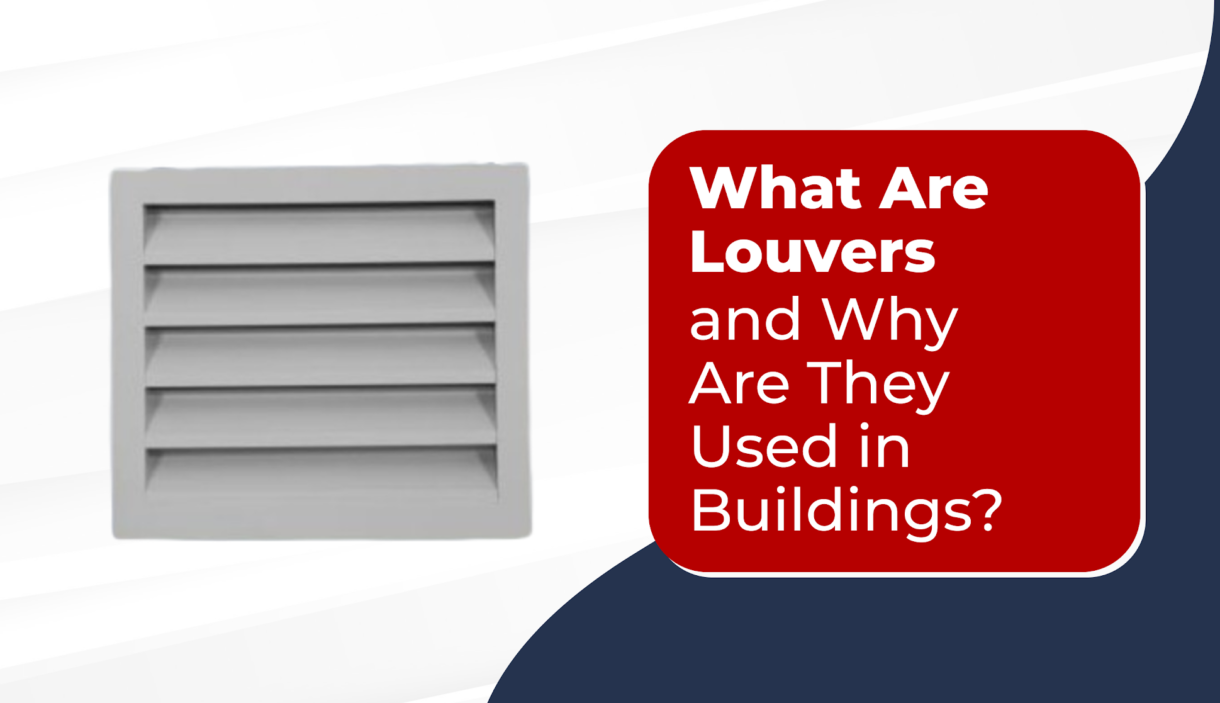What Are Louvers and Why Are They Used in Buildings?
In modern architecture and HVAC system design, louvers play a vital role in improving ventilation, protecting building interiors, and enhancing energy efficiency. While they may seem like simple metal or plastic slats, louvers are highly engineered components designed to regulate airflow, control rainwater penetration, reduce noise, and prevent the entry of dust, debris, or sand.
At Air Master, we provide high-performance louvers designed for both functional and aesthetic integration into any building facade. But what exactly are louvers, and why are they so essential in building systems?
What Are Louvers?
Louvers are slatted devices or assemblies, typically installed in walls, doors, or HVAC openings, to allow controlled airflow while blocking unwanted elements such as water, sand, insects, or noise. They may be fixed or operable, depending on the application, and are usually made from durable materials like aluminum, galvanized steel, or stainless steel to withstand environmental stress.
Louvers serve multiple purposes:
- Allow fresh air intake or exhaust
- Shield interiors from rain and debris
- Reduce sound transmission (in the case of acoustic louvers)
- Prevent sand and dust intrusion
- Enhance the building’s exterior appearance
Why Are Louvers Used in Buildings?
Louvers are critical components in HVAC and building ventilation systems due to their multifunctional properties:
- Ventilation Control: Louvers facilitate natural or mechanical ventilation, maintaining air quality indoors.
- Weather Protection: They help keep rain, snow, and wind-driven moisture from entering the building.
- Dust and Sand Prevention: Especially important in industrial or desert environments.
- Noise Reduction: Acoustic louvers minimize the transmission of sound from equipment rooms or air handling units.
- Energy Efficiency: Proper louver design can reduce energy consumption by improving airflow efficiency.
- Architectural Design: Louvers can be customized to align with building aesthetics.
Types of Louvers
At Air Master, we offer various louver types designed for specific building and HVAC applications:
1. Fresh Air Louvers
Designed to allow the intake of fresh outdoor air while keeping out water and debris. Ideal for ventilation openings and air handling unit intakes.
2. Heavy Duty Louvers
Engineered for industrial environments, these are robust and suitable for high wind loads or harsh conditions. They provide both strength and weather resistance.
3. Acoustic Louvers
Equipped with internal sound-absorbing materials, acoustic louvers reduce noise while allowing airflow—perfect for generator rooms, chiller plants, and mechanical enclosures.
4. Sand Trap Louvers
Designed for desert or dusty environments, these louvers filter out sand and large particles before the air enters the HVAC system. They typically feature a drainable design.
5. High Efficiency Louvers
These louvers offer superior water penetration resistance and airflow performance. They are used where precise environmental control is essential.
Conclusion
Louvers may appear simple, but their role in building functionality and comfort is significant. From ensuring proper airflow and reducing noise to offering protection from environmental elements, louvers are an essential part of efficient building design. At Air Master, we provide a full range of standard and custom louver solutions that meet both architectural and mechanical requirements. Whether you need acoustic performance, sand filtration, or high airflow efficiency, we’ve got you covered.
Need help selecting the right louver for your project? Contact Air Master today for expert guidance and tailored solutions.



